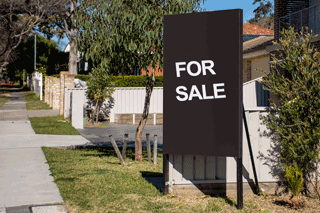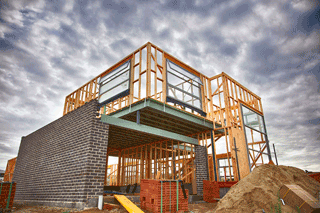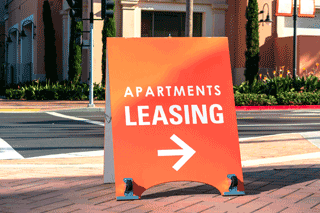Quote Of The Week
“While selling conditions have clearly softened from where they were in early 2022, and market activity has slowed, the fundamental long-term drivers of demand for housing remain solid.”
PropTrack economist Angus Moore
Clearance Rates Rebound Strongly
 Auction clearance rates have rebounded with buyers still keen to buy under the hammer.
Auction clearance rates have rebounded with buyers still keen to buy under the hammer.
According to CoreLogic figures, the national preliminary clearance rate hit 71% last week, the first time it has surpassed 70% since April 2022.
Sydney had a clearance rate of 78% and Melbourne 68%.
In the smaller capital cities, Adelaide once again had the highest preliminary clearance rate of 69%, followed by Canberra (66%) and Brisbane (63%).
As 2023 gets into full swing it is expected the number of properties being offered for auction will increase in the coming week, with about 2,500 homes scheduled to go under the hammer.
CoreLogic’s Tim Lawless says the rebound, particularly in Sydney, reflects a stabilising of the market.
“It’s really a strong result, something we haven’t seen in a year, well before interest rates started rising,” he says.
“Auction clearance rates have been improving and getting into the 70% range since the end of last year, but these numbers are a step-up.”
Listings Still Low And Prices Solid
 The number of properties being listed for sale across Australia remains lower than at the same time last year, despite a recent uptick.
The number of properties being listed for sale across Australia remains lower than at the same time last year, despite a recent uptick.
Analysis by PropTrack economist Angus Moore shows new listings in capital cities almost doubled month on month in January as sellers returned to the market.
“Despite the increase, new listings were still below 2022’s strong levels,” Moore says. “Conditions and activity slowed in the back half of 2022 following an extremely busy spring in 2021 which extended into early 2022.”.
At the same time Moore says house prices declined slightly, down 0.1% month-on-month in January, to be now 4.5% below their early 2022 peak (as a national average).
He says although some may struggle with continual interest rate rises, he is optimistic about the longer-term state of the economy.
“While selling conditions have clearly softened from where they were in early 2022, and market activity has slowed, the fundamental long-term drivers of demand for housing remain solid,” he says.
Home Construction Levels Decline
 New home construction is tipped to hit the lowest levels in almost a decade this year, according to the latest HIA report, adding to the shortage of homes across Australia.
New home construction is tipped to hit the lowest levels in almost a decade this year, according to the latest HIA report, adding to the shortage of homes across Australia.
HIA chief economist Tim Reardon says the number of detached houses commencing construction will drop further this year. He says housing starts will fall below 100,000 a year for the first time in a decade.
The HIA’s latest Outlook Report says interest rate rises have helped to bring the building boom to an end and further rate increases this year will accelerate the construction downturn.
“There was a large volume of work in the pipeline when rates started to rise in May 2022, and there remains a record number of homes under construction, but this will shrink quickly as market confidence continues to fade,” Reardon says.
“By the end of 2022, lending for the purchase or construction of a new home had already fallen to its lowest level since 2012 and the full impact of last year’s rate increases is still to flow through to households.”
Students Lift Economy, Worsen Shortage
 Their presence may lead to an even tighter rental market throughout Australia, but international students are set to make a big contribution to the local economy.
Their presence may lead to an even tighter rental market throughout Australia, but international students are set to make a big contribution to the local economy.
Almost 60,000 students arrived in Australia in January – more than double than at the same time last year.
Universities Australia chief executive Catriona Jackson says they contribute billions to the economy.
But with few developers delivering investment stock, the influx will also cause major rental market problems.
A Knight Frank poll of 70 developers reveals only 11% built stock aimed at investors in their last project and only 8% intend to do that with their next project.
Knight Frank head of residential research Michelle Ciesielski says this means continuing pressure in the rental market with fewer new dwellings being designed for investor buyers.
She says coupled with other issues for landlords, such as recent higher investor mortgage lending rates, there is little incentive for developers to build more investor stock.
CBD Vacancies Keep Dropping
 The residential vacancy rate in the capital city CBDs of Australia has hit a 16-year low.
The residential vacancy rate in the capital city CBDs of Australia has hit a 16-year low.
SQM Research managing director Louis Christopher says during January the proportion of empty rental apartments in central business districts fell below their pre-pandemic levels.
The vacancy rate in Sydney’s CBD dropped by 1.2 percentage points month-on-month to 4.5%, compared with 4.6% at the onset of Covid.
Melbourne vacancies fell by 1.7 points to 4% in January, compared with the pre-pandemic level of 4.6%.
Christopher says normally vacancy rates drop in January anyway, but these decreases are higher than expected.
“Rental market conditions are very tight – and now with the international border reopening and a part-return to working from the office continuing, it’s highly likely that CBD and inner-city rental vacancy rates will fall further,” he says.
Brisbane CBD’s vacancy rate is 5.8%, Canberra 2.4%, Adelaide 2.7%, Perth 1.6%, Hobart 0.4% and Darwin 2.3%. Beyond the CBDs, the national vacancy rate is 1%.




